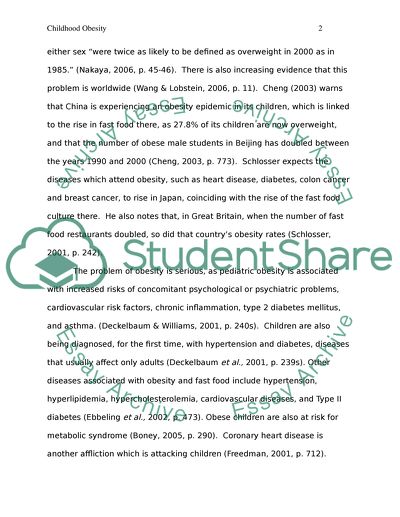Cite this document
(“Childhood Obesity: Causes and Concerns and Intervention Strategies Research Paper”, n.d.)
Childhood Obesity: Causes and Concerns and Intervention Strategies Research Paper. Retrieved from https://studentshare.org/health-sciences-medicine/1622498-childhood-obesity-causes-and-concerns-and-intervention-strategies
Childhood Obesity: Causes and Concerns and Intervention Strategies Research Paper. Retrieved from https://studentshare.org/health-sciences-medicine/1622498-childhood-obesity-causes-and-concerns-and-intervention-strategies
(Childhood Obesity: Causes and Concerns and Intervention Strategies Research Paper)
Childhood Obesity: Causes and Concerns and Intervention Strategies Research Paper. https://studentshare.org/health-sciences-medicine/1622498-childhood-obesity-causes-and-concerns-and-intervention-strategies.
Childhood Obesity: Causes and Concerns and Intervention Strategies Research Paper. https://studentshare.org/health-sciences-medicine/1622498-childhood-obesity-causes-and-concerns-and-intervention-strategies.
“Childhood Obesity: Causes and Concerns and Intervention Strategies Research Paper”, n.d. https://studentshare.org/health-sciences-medicine/1622498-childhood-obesity-causes-and-concerns-and-intervention-strategies.


